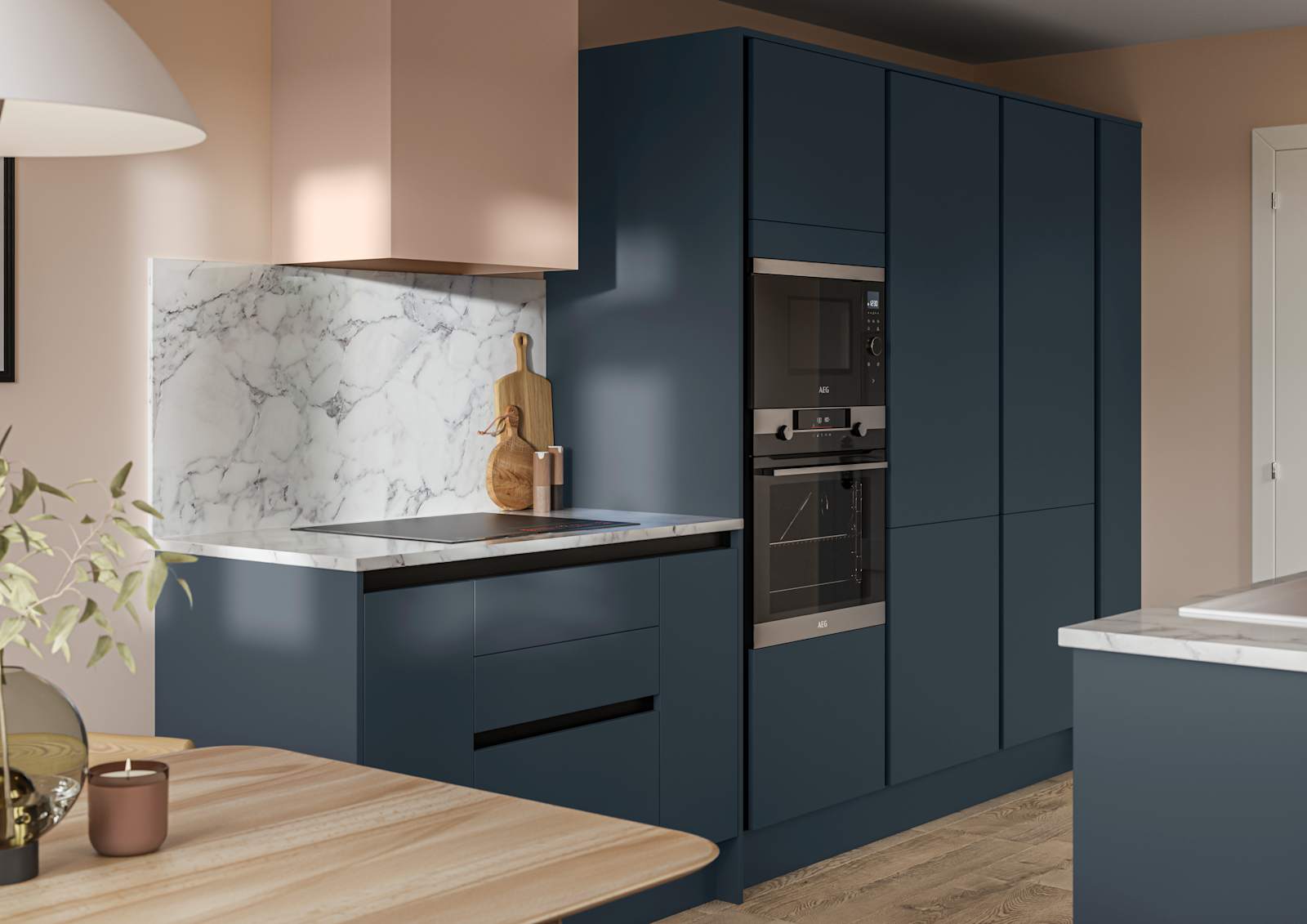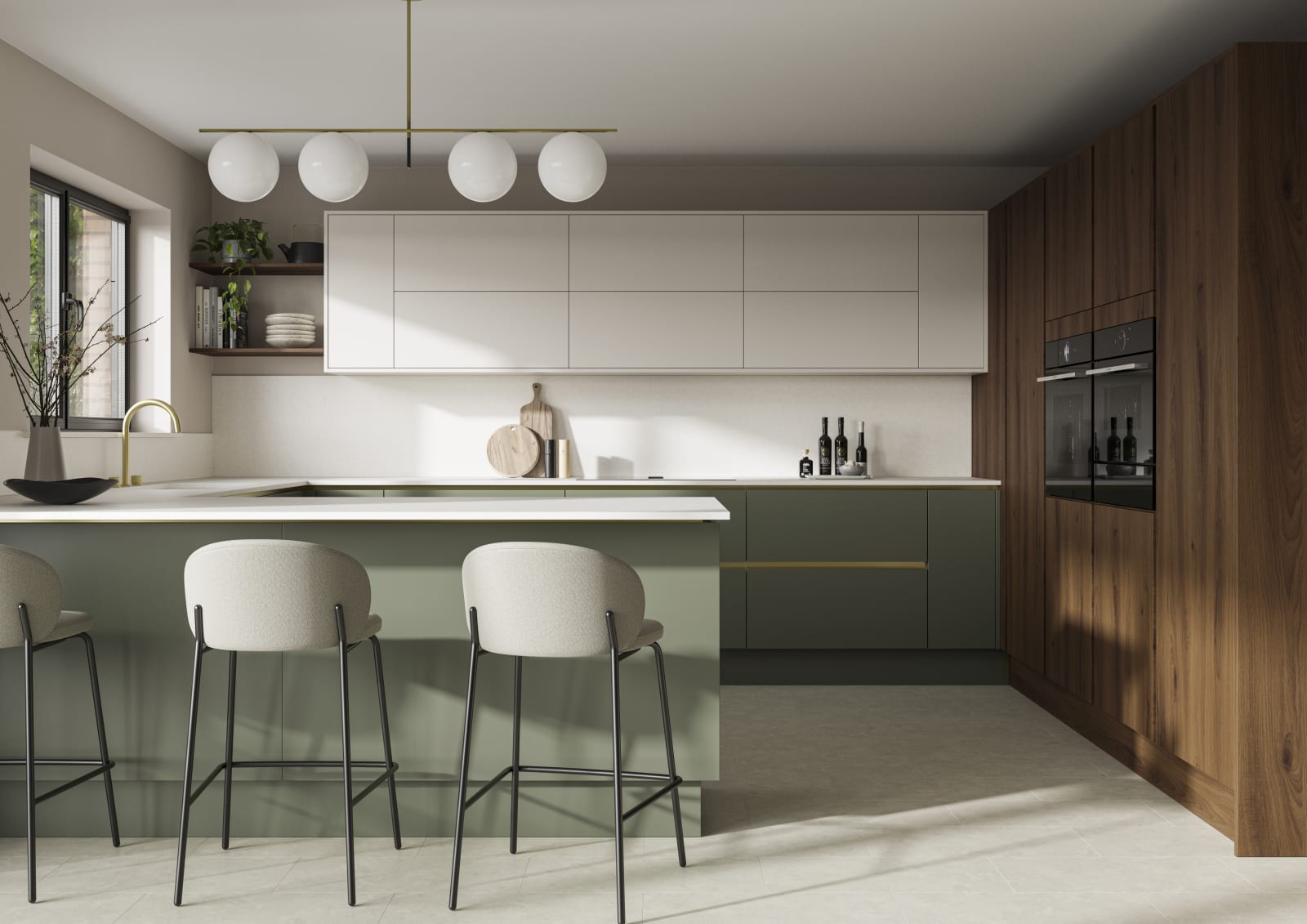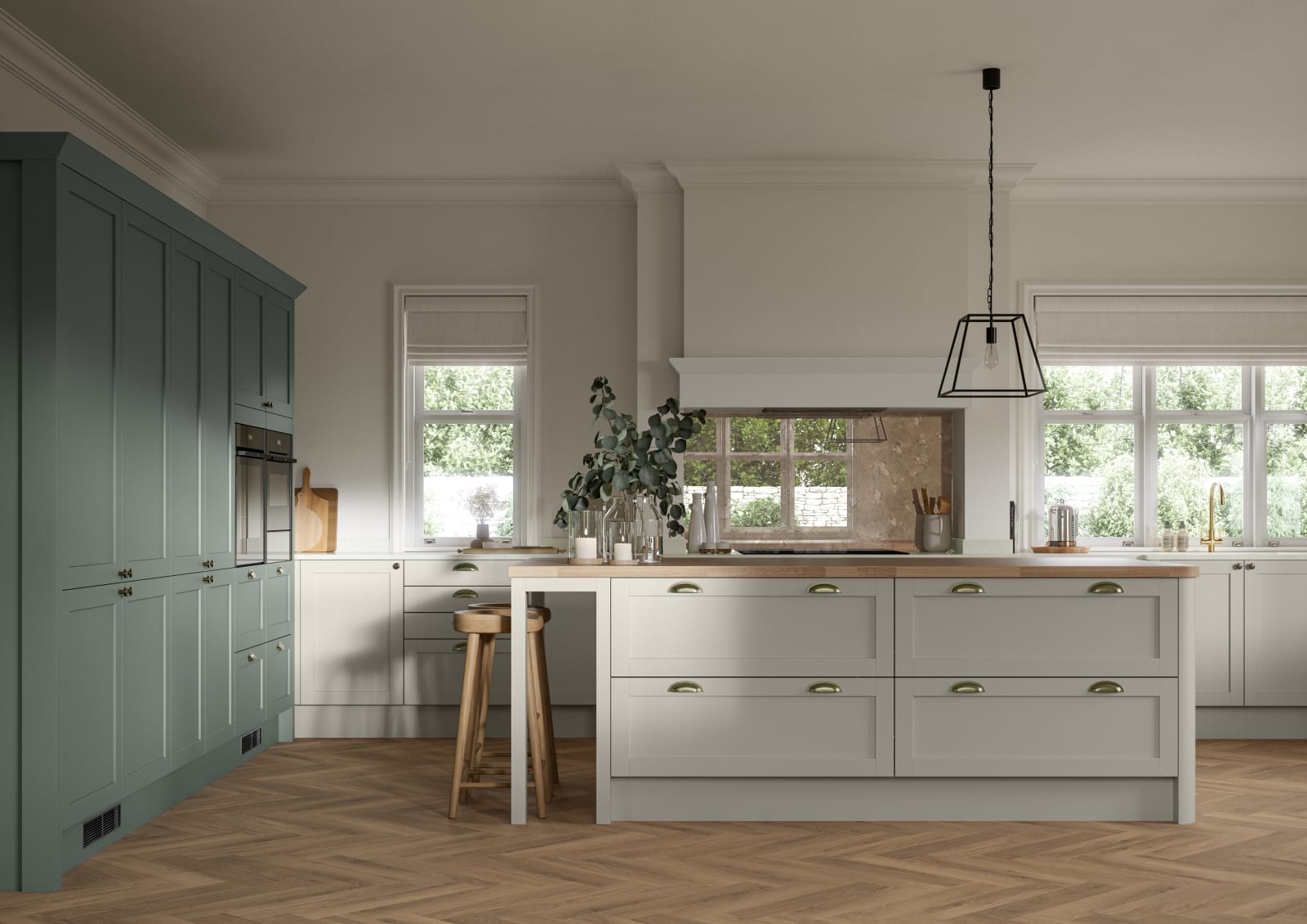Adapting to changing kitchen footprints: Expanding and reconfiguring spaces
As our lives change, so do our expectations of what a kitchen should deliver.
Maybe your family is growing, you need more space to entertain or you’re simply wanting to modernise your kitchen layout.
Whatever your reason, adapting your kitchen layout can transform both how your space works and how it makes you feel.

Intega Ascoli Mineral Blue kitchen
Understanding your changing kitchen layout needs
As a first step, consider what's driving your need for change. Is it about creating more workspace? Incorporating dining? Or perhaps integrating smart appliances that weren't even invented when your kitchen was last updated?
Think about how you currently use your kitchen throughout the day. Notice where you bump into each other during morning rushes or where preparation space feels cramped during meal preparation.
These observations will provide the foundation for reconfiguring your kitchen so it serves you best – whatever your needs and preferences look like.
Options for expanding your kitchen
Breaking through boundaries
The most permanent way to expand your kitchen footprint is by removing walls. This approach creates a sense of openness that can make your entire ground floor feel more spacious. Consider:
- Removing non-load-bearing walls between kitchen and dining areas
- Creating partial openings with breakfast bars to maintain some separation
- Installing wider doorways to improve flow without full removal
Bear in mind that structural considerations are paramount. Always consult a structural engineer before removing any wall, even if you believe it's non-load-bearing.

Traditional Shaker-style Ludlow Parchment

Dunham Midnight kitchen with large windows
External extensions
When internal expansion isn't feasible, building outward could be a workable alternative. Options for external add-ons include:
- Side-return extensions that reclaim often-unused alleyways alongside terraced properties
- Rear extensions that create kitchen-diners overlooking the garden
- Wraparound extensions combining both approaches for maximum space optimisation
Even modest extensions of 1-2 metres can significantly improve your kitchen's functionality, and potentially add value to your property as well.
Clever space division
Sometimes the goal isn't more square footage but rather better-organised space. Partial walls, split-level flooring or kitchen islands can delineate cooking from dining areas without losing the appeal of open-plan living.
Consider a peninsula unit that provides both workspace and a natural division between cooking and living zones. These flexible solutions maintain openness while creating distinct functional areas.

Ascoli Woodland Green and light grey

Shaker-style Ludlow Limestone
Reconfiguring layouts to maximise existing space
The relationship between your oven, sink and refrigerator – the classic 'working triangle' – is an important aspect of an efficient kitchen layout. When reconfiguring, keep these elements in mind to ensure comfortable proximity and avoid traffic cutting through these crucial pathways.
The right configuration depends entirely on your space and how you use it. Prioritise what matters most – whether that's preparation space, entertaining areas, storage or a combination.
If you’re looking to reconfigure a traditional kitchen layout, consider clever solutions like:
- Galley-plus layouts that extend traditional galley kitchens with an island or dining area
- L-shaped layouts with integrated breakfast bars that maximise corner spaces
- U-shaped layouts that provide abundant workspace in compact footprints
Also consider the impact of accessible storage near where items are used. For example, plates near the dishwasher, spices near the hob or baking equipment near preparation areas can improve efficiency and usability of the space.

Integra Soho Thyme kitchen with Integra Portobello tall cabinetry

Hoxton Sumi Black kitchen island
Integrating modern appliances thoughtfully
When reconfiguring your kitchen, built-in appliances create clean lines and maximise available space, integrating with cabinetry for a seamless, uncluttered appearance.
Combination appliances such as combi-steam ovens perform multiple cooking functions within a single unit, reducing the need for numerous separate devices.
For ultimate flexibility, consider drawer-style dishwashers or refrigerators that can be placed where they’re needed within your workflow, rather than being constrained by traditional layouts.
Under-counter or specialty appliances can free up valuable wall space, allowing for more storage or to create a more open, airy feel to your kitchen environment.
When it comes to planning for the future, it’s also a good idea to include extra power points and consider how your kitchen will adapt to emerging smart home innovations.

Integrated dishwasher in Soho Balmoral cabinetry
Space optimisation: Multifunctional areas & separating functions
The modern kitchen often serves multiple purposes – food prep, dining, WFH station and more. Dining areas can be made more versatile to suit different uses with options like:
- Extendable tables that adjust to different gathering sizes
- Banquette seating with storage underneath
- Kitchen islands with overhangs that accommodate bar seating
- Drop-leaf tables that can be expanded when needed
In some cases, it could be more effective to move certain functions elsewhere, such as creating a dedicated utility room for laundry appliances and cleaning equipment, or adding a pantry space that frees kitchen storage for cookware rather than groceries.
Even small areas can be repurposed effectively. Space under stairs, alcoves or landings can all provide valuable utility functions that declutter your main kitchen area.

Brunswick Sumi Black kitchen with utility space
Book a design appointment
Reimagining your kitchen footprint represents both challenge and opportunity. While this guide provides starting points, professional designers bring invaluable expertise to this complex project.
Our design team specialises in creating kitchens that truly reflect how you live. We balance aesthetic considerations with practical functionality, ensuring your new space works as beautifully as it looks.

Minimalist kitchen Luna Seagrass




























